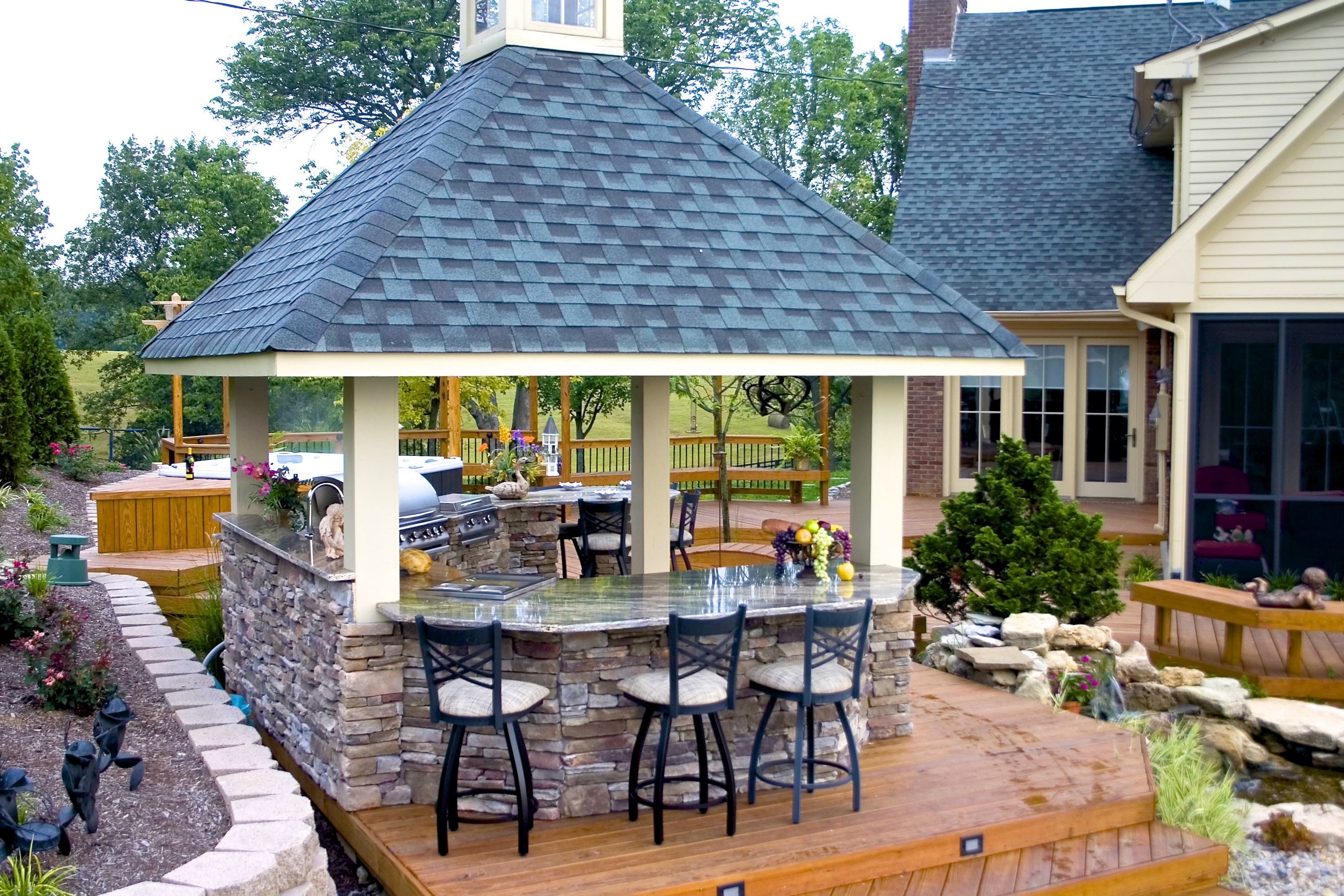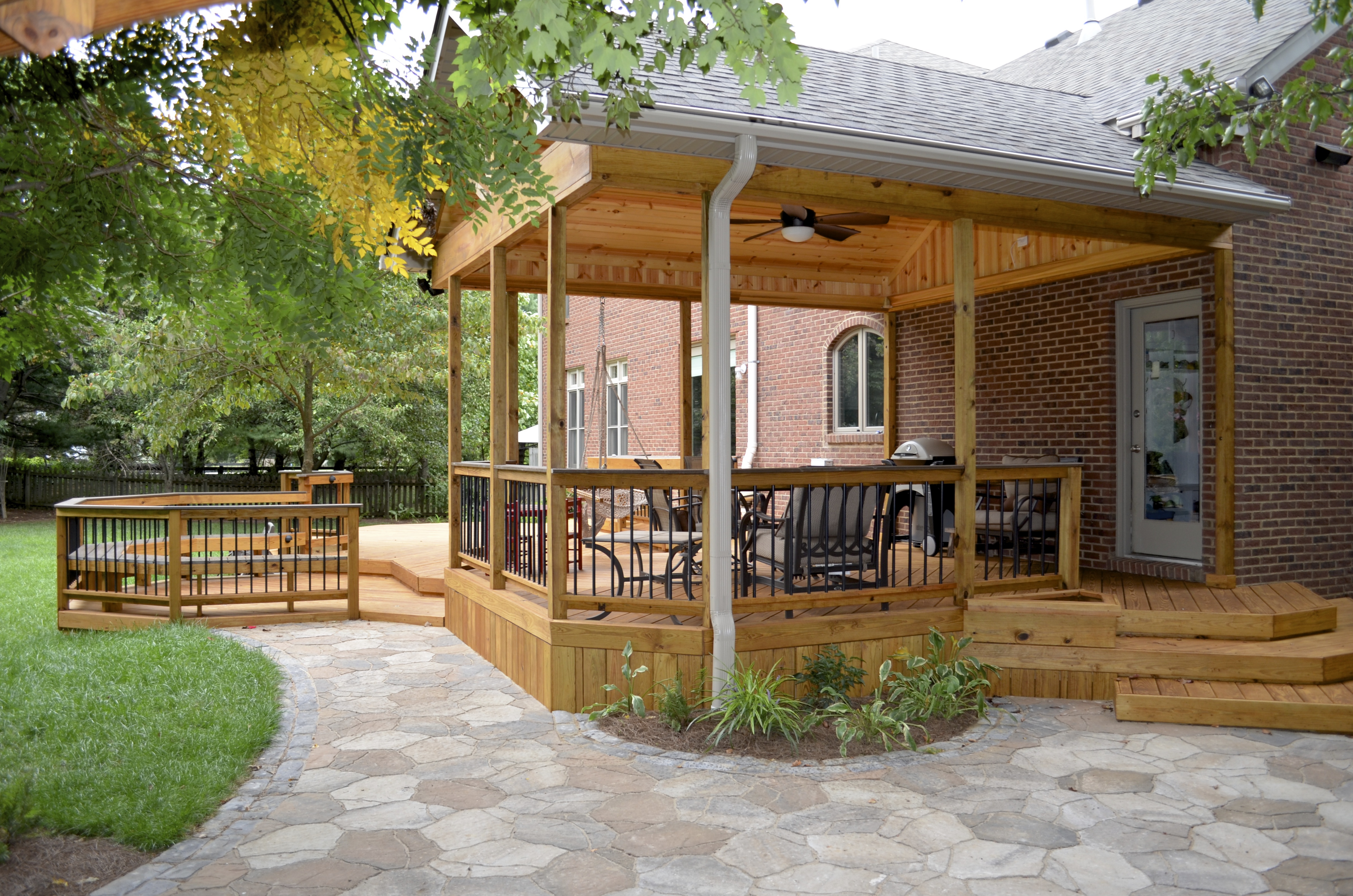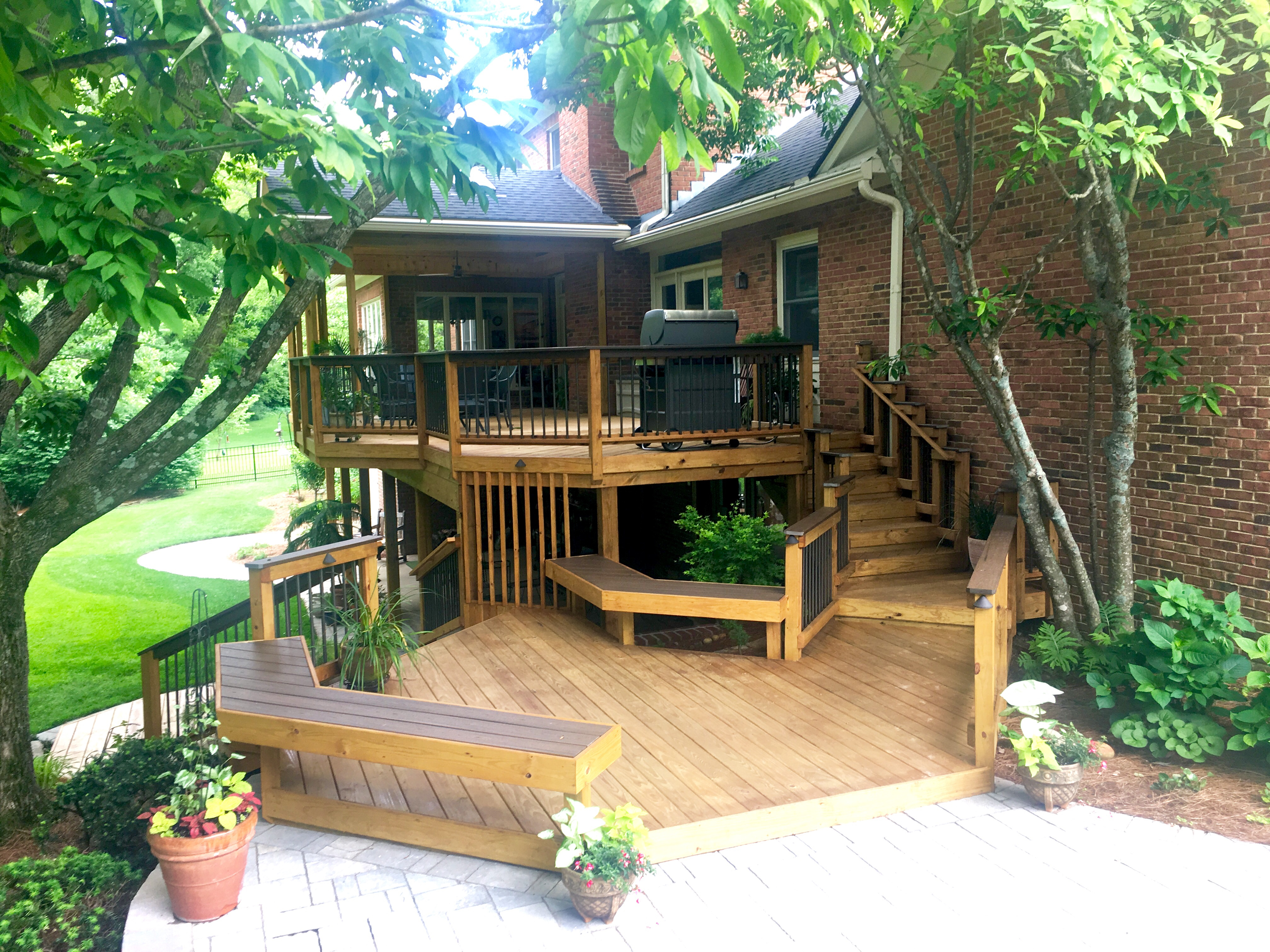
Deck Maintenance & Repair
Are you taking proper care of your outdoor haven? Your deck can be enjoyed during all seasons, but your deck can endure a lot of damage through the months, and you might be too busy taking advantage of your deck to bother with maintaining it. However, with this simple guide, you can quickly assess your deck, know the repairs that may need to be made, and get back to appreciating your deck.
Pests
One of the not-so-great features of warmer months is the emergence of insects and other potentially harmful creatures. Throughout this time, you should keep a watchful eye out for wasp, hornet, or bee nests attached to the top, sides, and bottom of your deck or under deck. No one wants to be relaxing in a hot tub and fall under the siege of a swarm of painful stingers.
In addition to pain inducing nuisances, you should also defend against ants. Ants may converge on your deck to eat your freshly grilled steaks, to find an entrance to your house, or can be a sign of a greater issue: termites. If you have a wooden deck, and not a composite, your biggest fear is likely falling victim to a termite or carpenter ant infestation. Signs of termites include: long strips carved out of your deck and what looks like sawdust, but is actually termite droppings. Actual sawdust is a sign of carpenter ants. Termites and carpenter ants should be combatted by a professional pest management technician, as they can do real, long-term damage to your deck.
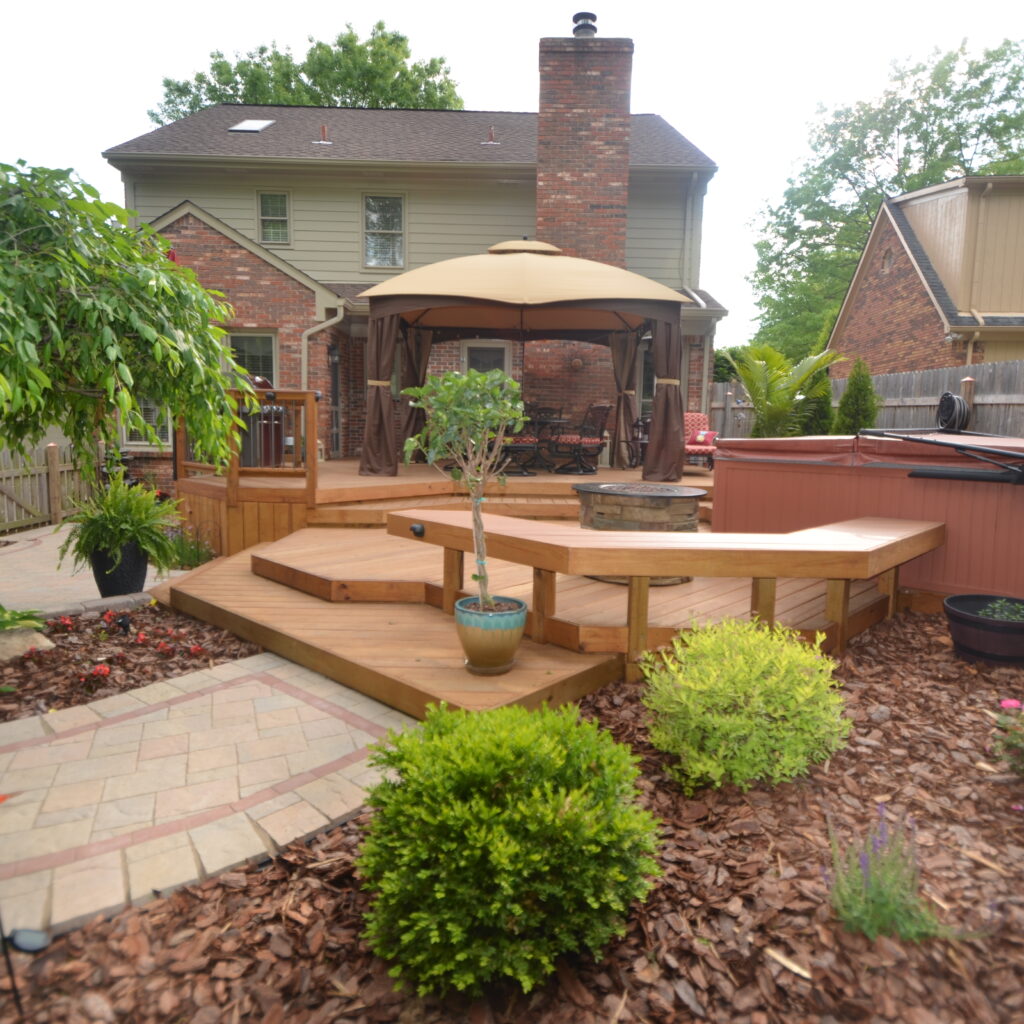
Inspection & Repairs
Checking for deck damage while doing deck maintenance is an exercise deck owners are capable of, whereas many repairs may not be. Some types of wear and tear are easy to spot, such as nails that have loosened from their board, boards that have split, loose rails or posts, and stain or seal that has degraded over time. Other problems, like rot, are harder to inspect and require a little more work to sniff them out.
While exterior problems can be discovered by observation or the slight shake of a rail or post, rot demands a more hands-on approach. Luckily, all you need to check for rot is a flat-head screwdriver and a few spare minutes. Wielding the screwdriver, probe boards, posts, and any other deck material that appears suspect, and if the screwdriver goes a quarter-inch or more into the material, your deck likely has rot. If you find any damage to your deck, the qualified professionals at American Deck & Sunroom are eager to help return your deck to its previous luster.
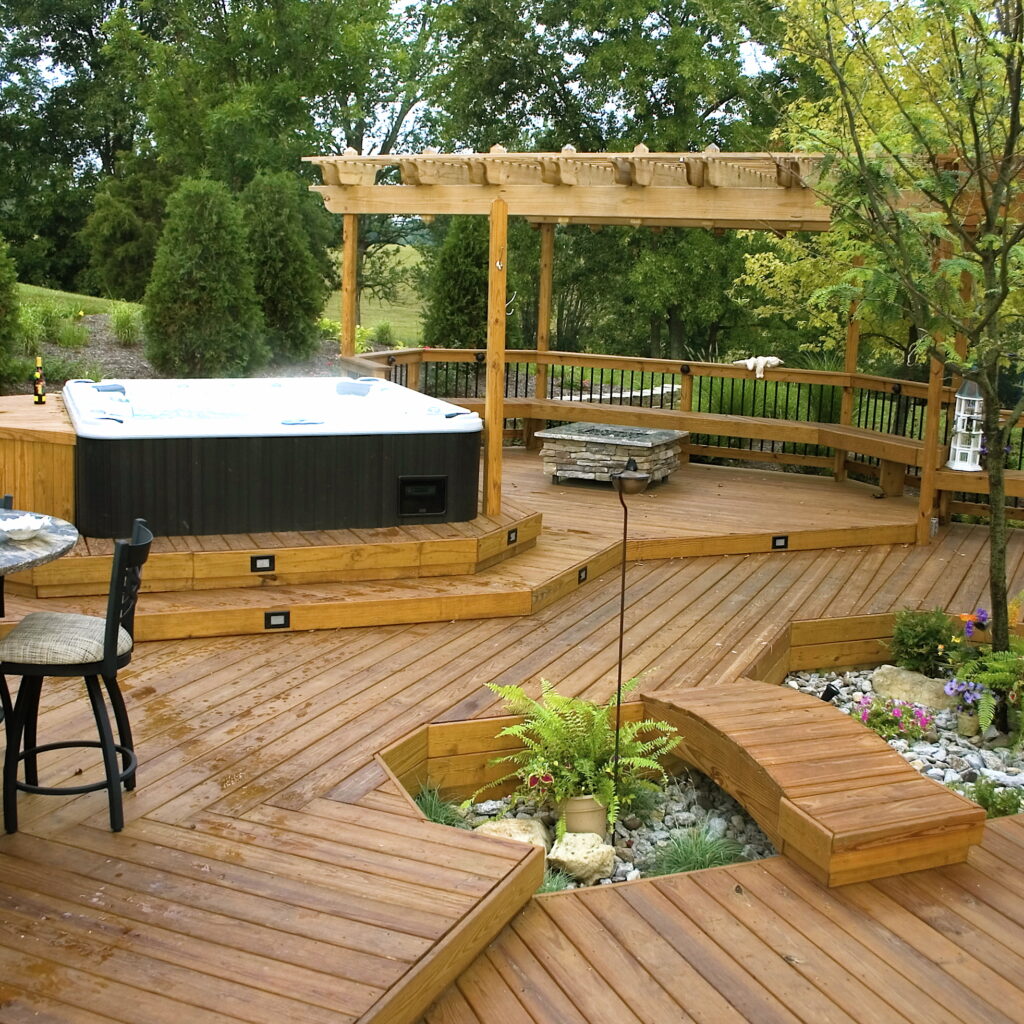
This helpful list serves as a quick go-to guide for those who are new to deck maintenance and care, or for those who simply need a refresher.
1. Staining a deck preserves the lumber. Not true. Pressure treated lumber is already preserved, in most cases for life. The stain merely gives the lumber protection from UV rays that would ultimately turn the wood gray and oxidize it. Many stains also include chemicals that prevent and or resist mold and mildew from forming on the wood in shady, damp locations. That resistance lasts for 2 to 3 years until the next coat of stain reinforces the prevention.
2. Stain is meant to seal the deck from water penetration. Not true. Water does not harm pressure treated lumber. In fact, pressure treated lumber prefers to be moistened by water a lot more than it likes being dried out by intense summer sunlight. Sunlight with no relief is the single biggest enemy of pressure treated lumber. If you see advertising that highlights the ability for water to bead up on the deck after being stained, it’s simply a marketing tool to sell the stain. It’s accomplished by adding silicone or paraffin to the stain. The ability to bead water on the deck, in most cases, only lasts for a few weeks.
3. You need to wait a year before you apply the first coat of stain. Not true. If you wait for a whole year before staining the deck, the wood will be dead, dried, cracked and already have turned gray. In other words, the battle will have been lost before your first brush stroke. Pressure treated lumber is full of moisture. A good deck builder will install new decking with no spacing between the boards. When the wood dries, it will automatically shrink leaving gaps between the boards which are necessary for drainage to prevent mold and mildew from forming on the decking. When these gaps appear, it’s evidence that enough moisture has left the wood to allow stain to penetrate the material sufficiently enough to protect the new wood from the harmful effects of the sun.
4. It’s necessary to also stain the underside of a deck. Not true. Remember the stain’s main purpose is to protect the wood from the harmful effects of direct sunlight. The underside of decks, by its very nature, never sees direct sunlight, so stain under a deck is not necessary. If you don’t believe me, go on a really old gray cracked deck and turn a board over. The underside will look nearly new. No sun. Having said that, no sun can cause mold and mildew to build up on the underside of decks. Staining the underside of the deck will prevent that from occurring on decks where the underside will be seen as a part of the outdoor living space.
5. You need to stain your deck every year. Not true. The less direct sunlight to which a deck is exposed will require less frequent applications. Decks on the north side of a house, under the canopy of a wooded yard with mature trees, or under the cover of a pergola or roof structure will increase the number of years a deck can go before additional staining is required. Extremely sunny locations with no hope of shade from morning until night would require a deck to be stained every year. Under a roof, a deck may not need to be stained again for up to 10 years or more.
6. Clear is an acceptable and attractive color to choose. Not true. Clear stains offer little to no protection from UV rays. Always choose a color.
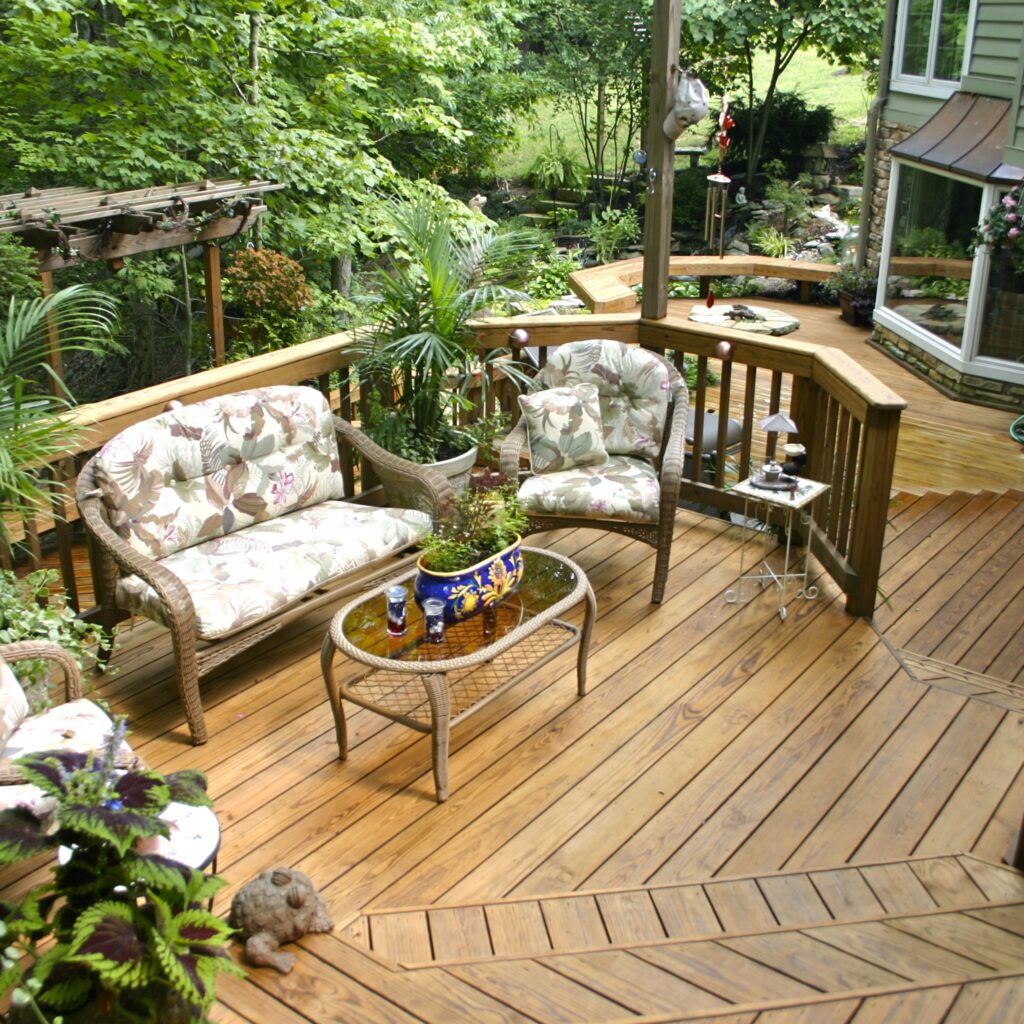
7. Power washing is the best way to clean a deck. Not true. Never power wash a deck. Oxygenated bleaches are available in a liquid or powdered form that are mixed with water and sprayed on a deck with an inexpensive pump sprayer. Do this on a cool overcast day, even right after a rain when the deck is still wet. Let the mixture stay on the deck for 15 minutes, being sure to not let the deck dry the entire time. Then simply broom it in and rinse off thoroughly with a garden hose. It’s a biodegradable product that will do no harm to plants or pets. It will not gouge out or “fuzz up” the wood like power washers are known to do. If the deck is really dirty and old from years of neglect, the deck can be power sanded if the quality of the wood is good and the deck is screwed down and not nailed. Then rinse, allow time to dry, and stain. The deck will look like new. Never use Clorox bleach to clean a deck. It’s not that good at removing mold & mildew from deep in the wood, and it will corrode all of the fasteners used to hold the deck together. It’s very corrosive and not environmentally safe. Cleaning a deck once in the Spring and once in the Fall is all that is normally required.
8. Spraying or rolling the stain on a deck is a better and quicker way to apply stain to a deck. Not true. Both spraying and rolling a deck with stain doesn’t not work the stain into the wood sufficiently. Working the stain in with a brush after applying with a sprayer or roller is a good plan. The other down side to spraying is two-fold. First, some stains are very expensive. Spraying wastes a lot of stain that simply gets carried away in the wind. This also leads to the second problem: unless it’s a perfectly still day, the spray gets everywhere. Even if you take the time and spend the money to tape off critical areas to keep them safe from overspray, it doesn’t always protect the neighbors’ cars and belongings from overspray that lightly and secretly drifts with stealth breezes throughout the neighborhood. It happens all the time.
9. There are products today that make decks maintenance-free. Not true. Composite boards, paver patios and even concrete patios all will need to be cleaned and repaired occasionally. They are all outside products exposed to the elements 24/7/365. What did you expect?
New composite boards are expensive but do minimize the amount of custom deck maintenance it takes to keep a deck looking good. At the very least, there are aluminum spindles and composite caps for railings that take a lot of work out of upkeep for the hardest part of the deck requiring stain: the railing. You can always hire a professional to stain your deck for you. Dexappeal is a company we know in central Kentucky that passes the test.
Interested in more information about our decks? Contact us today!
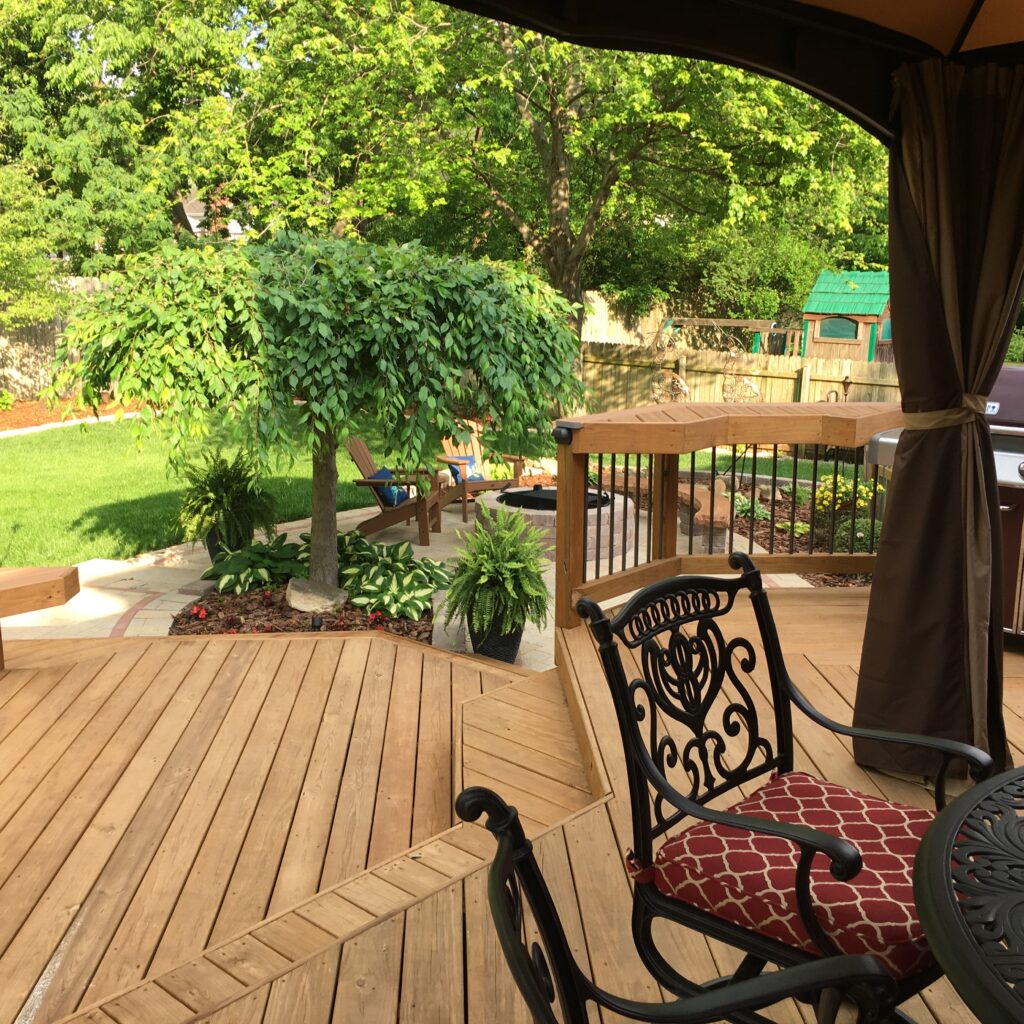
Remember…
No matter your architectural needs, American Deck & Sunroom can provide you with a custom design that will increase the worth of your home, will blend seamlessly with your existing architecture, and will last a lifetime. Many homes benefit from the beauty of both of these custom architectural additions.
At American Deck & Sunroom, we don’t build houses. What we do is design and build beautiful outdoor spaces…extensions of your home that flow with your existing property and architecture. And because we specialize, we go beyond the, “If you can dream it, we can build it,” catchphrase often quoted. After nearly 20 years in business and nearly 13,000 designs and counting, we have the experience to design outdoor spaces you’ve never even dreamed possible.




